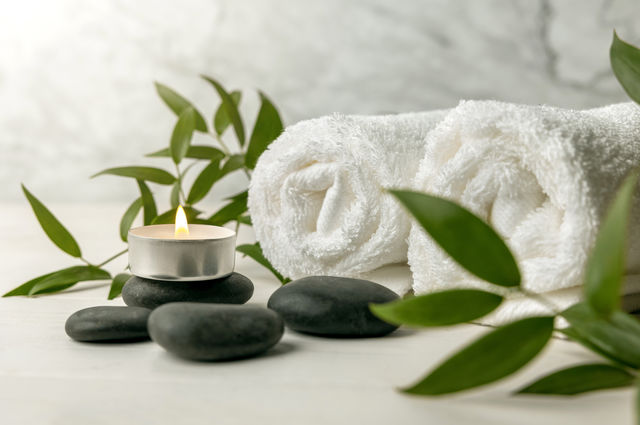Wellness vs F&B: New Recipe for Revenue Maximisation in Hotels?
12 experts shared their view
In recent years, wellness tourism has emerged as a powerhouse in the global travel industry, with the market expected to reach a staggering USD 2.1 trillion by 2030. In response to the experiences during the pandemic that stressed the value of wellness, travel habits have now led towards seeking destinations that support physical and psychological health. Around the globe, renowned hotel brands now consider wellness as a key element in their offerings. Insights shared by Skift about the Wellness Real Estate Report 2023, released by RLA Global, claim that multiple brands, including Hilton and IHG, are expanding their services into the realm of wellness.
Within the next decade, the wellness tourism market is expected to grow by over 12% each year, with wellnesses predicted to be one of the major revenue sources for hotels.
As the industry experiences this change, this raises questions;
- Is wellness paramount for driving profitability in hospitality businesses?
- Can wellness generate hotel revenue the same as F&B services?
- Is the shift in consumer preference compelling enough to shift investment patterns?
- Would this take away the core focus of a hotel's operation or add to it?
During the last few years, F&B services have been a main source of income (beyond rooms) for hotels, with some of the largest F&B operations approaching 50% of total revenues. Meanwhile, the Wellness Real Estate Report 2023 revealed that average TRevPAR increased by over 53% in 2022 at hotels with 'minor wellness' offerings and around 47% at 'major wellness' properties.
With wellness being a priority of modern travellers, the question is, can wellness generate revenue the same way as F&B services in hotels?
Wellness in hotels has become important due to a growing consumer demand for holistic experiences that prioritize health and well-being.
This department can in some cases generate revenue for hotels similarly to F&B, however, the extent of this contribution is contingent upon factors such as the size and features of the wellness center and F&B and the type of destination. A well-executed wellness program and departments has the potential to create a competitive advantage in some markets, positively impacting profitability, but it requires a thoughtful and strategic approach to both service delivery and financial management.
It's essential to consider the operational costs associated with managing wellness services and area. The success of integrating wellness depends on effective cost management, strategic pricing, marketing actions and the ability to offer services that align with market demands.
I believe there is already a focus on wellness especially in the luxury world, and lately, several projects for the care of both the physical body and the soul have been emerging. The trend toward these types of investments has indeed begun and is increasing, but it won't lead to a significant shift; it won't become predominant.
The wellness travel boom is really shaking things up in the hotel business. It's not just a big deal; it's a whole new direction for the industry.
Here at Catala Consulting, we've noticed that the integration of wellness into hotels isn't just a response to a passing trend. It's a strategic move towards catering to the evolving needs of travellers, and in my experience, it has the potential to match, if not surpass, the revenue generated by traditional F&B services.
It could as well be a unique selling point from your hotel, attracting guests for both the health and wellness experience, but as well to your F&B outlets. Guests choose your property because of your positioning into this segment, but still need the F&B offerings during their stays.
Embracing this wellness revolution could be the key to unlocking new levels of success and guest satisfaction in the hospitality industry. This shouldn't be in my opinion "all eggs and focus into the F&B basket" or "all eggs and focus into the wellness basket" but rather a good integration of both, in line with your hotel positioning, with indeed the TRevPAR as the key metric to optimize.
Can wellness generate revenue the same way as F&B services in hotels? - Yes. Hospitality is a lifestyle industry- from its location, to its architectural design, to the services offered.
In the United States, wellness is about a USD$450B industry (70% in product and 30% in service) and growing. Furthermore, according to McKinsey & Company, consumers throughout the world view wellness across 6 categories:
- Health, fitness, nutrition, appearance, sleep, mindfulness.
Of the 6 categories – a minimum of 3 belong to hospitality directly (sleep, fitness, nutrition), but really all 6 are experienced in almost any full service hotel.
Capitalizing monetarily on these six elements is a little more difficult. For example, nobody really charges anyone to use the fitness center, etc. However, if you have a dedicated spa or wellness center- you can charge for both products and services. Areas for manicures, pedicures, facials (appearance) to treatment rooms for massages, energy work, meditations (mindfulness and/or sleep).
Only a detailed market study can determine how useful that space is from a revenue per sq ft basis. Personal experience has shown me some hotels where the spa had a larger footprint than the restaurant/some catering space and generated more profit.
The surge of wellness is obvious for all of us in the industry, and is even proven by research numbers; the wellness market is growing with a CAGR of 9.1%. The allure of wellness tourism to high-end guests marked by significant expenditure undoubtedly positions it as a significant source of income for hotels. Hence it's important to consider wellness as a serious revenue generator like F&B services.
Overall, I agree wellness can generate revenues, however, it should not be looked at as ancillary revenue from an outlet, rather a lifestyle offered for the guest and the culture of the hotel. As wellness-minded travelers look for accommodations that include wellness, F&B is a part of the offer just as fitness, spa, guest rooms, meeting spaces, and outdoor space should be considered. Being wellness focused in all areas ensures a hotel can capture the guest that will continue their healthy journey.
Pure Wellness (www.pureroom.com), as an example, is a way of injecting a wellness narrative into almost any guest room, it is not a standalone wellness amenity. It makes your room product more applicable/attractive to the wellness aware traveler, and it allows you to increase room revenues because of the association with wellness.
Studies have shown that the wellness-minded traveler will spend significantly more for no disruption in their lifestyles when traveling. This spend can be throughout the hotel from wellness guest rooms, spas, healthy menus, fitness enhancements and wellness meetings so the revenue capture is vast. Even hotels not geared towards lifestyle or wellness can incorporate wellness and capture market share and revenue.
With today's technology, wellness-focused amenities can easily be personalized and delivered according to the guest's preferences.
Whether complementing existing programs or focusing on more expanded holistic initiatives, investing in current hotel technology will provide tremendous opportunity to support the wellness-driven guest's lifestyle, while attracting new bookings.
Hotels can begin with a data-driven strategy by using a business intelligence solution to understand how their performance stacks up against their market and competitive set. This will enable hotels to identify busy or slow periods in which custom wellness offers can be activated to incentivize travel.
Key to personalization of any kind is the ability to know the guest. By pairing individual profile and preference data from a guest management system with a modern booking engine, hotels will be able to launch tailored promotions to upsell guests during the hotel booking process. This allows them to personalize their stay while spending more on wellness amenities and services.
Then once the guest is onsite, a service optimization tool can ensure their room is prepped by housekeeping or front desk teams with their requested add-ons. It's all managed seamlessly using hotel technology to lighten the burden and coordination on staff.
Wellness tourism is not a new phenomenon - humans have traveled with health or wellness as the primary focus for centuries.
Typically, wellness tourism is travel associated with the pursuit of maintaining or enhancing personal well-being. It comes in many shapes and forms: spa retreat, rejuvenating weekend of doing nothing, forest bathing trip, etc. Unlike regular vacations which are often stressful and full of activities, wellness tourism's main objective is to relieve stress and promote health.
Now, the question is, how many hotels have facilities and amenities suitable for wellness tourism like spas or wellness centers? And how many hoteliers have employees that are professionally trained wellness specialists? And how many hoteliers have the knowledge or even desire to create and offer wellness tourism activities such as forest bathing, ecotherapy trips or other wellness-inspired experiences? These same hoteliers whose Valentine's Day special package is still hanging on the property website in August?
Unfortunately, unless you are 4- and 5- star hotel with established spa or wellness center, or a smart hotelier with a property in a natural setting that has hired a professional wellness tourism specialist, I do not see the rest of hospitality benefiting greatly from wellness tourism.
Wellness, if done right, with the right property and the right setting, will yield excellent TRevPAR and will bring a whole new client into your hotel or resort.
If considering a wellness offering you need to ensure you do market research and ensure you identify the customer group that would be likely to use these services. For many resorts this may be a must have in the future. For urban hotels you can enhance the overall experience by adding light wellness items.
Ensuring a full underwriting and feisibilty study will be necessary to ensure success.
Finally, after rooms and F&B came first, it's the time to put the focus on Revenue Management in Spas. And there is a lot to look into as, currently, most Spas within Hotels and resorts are deficitary.
There are good news on the horizon, though:
- The growing demand for wellness means Spas are no longer just a luxury add-on. Increased demand means they are generating significant revenue for hotels (but remember, more revenue does not necessarily mean more profit).
- The technology that is easily available nowadays also for Spas is making it accessible to every business to be able to track all data properly, and therefore be able to set revenue-related KPIs.
And that is the key: The lack of professionalization of the Spa management has lead to a poor data treatment, and a low adoption of revenue management.
So, next time you seat with your Spa manager, make sure he/she can answer questions such as the RevPATH ( Revenue per available treatment hour) If they can, you are on the right track towards a profitable outlet. If they look at you puzzled, then they/you need help. Fast.
There is an unmistakable and growing interest in the field of wellness. This trend transcends basic offerings like spas, pools, or Turkish baths, encompassing advanced areas such as anti-aging techniques. Prominent figures like Bryan Johnson and Andrew Huberman have brought significant attention to these developments, educating the public about their potential. As someone who has long practiced vegetarianism, biohacking, and meditation, I view this shift - once considered peripheral in the hospitality industry - with optimism. While consumer preferences may not yet exert a strong enough influence to alter investment patterns significantly, hotels already engaged in wellness initiatives should consider incorporating more advanced technologies. These could include Virtual Reality-enhanced mindfulness experiences, AI-personalized wellness plans, cryotherapy, sensory deprivation tanks, or even a nootropic-enhanced menu (not unlike what we already do with pillows). As the inclination towards a wellness-focused lifestyle gains momentum, it is likely that the majority of hotels will need to adopt such innovations in the near future.
Wellness drives revenue for hotels directly and indirectly.
Spa services generate revenue directly. Guests staying at the hotel, as well as locals, pay for these services and contribute to the hotel's total revenue. Maintaining a balance between income and expenses is essential to keep the Spa Department profitable.
The indirect and critical role of Wellness is creating a competitive advantage for the hotel. Room is a commodity, and competition is extremely high. Hotels can differentiate themselves from competitors by offering wellness options, which can become a deciding factor for guests when booking. Below are some wellness amenities and services that can help hotels stand out from the competition:
- Spa services (massages, body treatments, salon)
- Spa facilities (steam room, sauna, lap pool, etc.)
- In-room wellness (smart curtains, sleep-aid, pillow menus, on-demand wellness content, etc.)
- Spa packages (room+spa services; room+wellness activities, etc.)
- Wellness activities (yoga, hiking, pilates, cycling, etc.)
- Wellness education (cooking, exercise, nutrition, mental health, etc.)
- Spaces that connect to nature (observation terraces, rooftop gardens, spaces with views of nature, etc.)
By providing wellness amenities and services, hotels offer a better experience for their guests and stand out from the competition.
There is no doubt that after the pandemic, greater sensitivity and attention towards psychophysical well-being has developed. Traveling is no longer just about discovering, but also about recharging, rejuvenating and relaxing. But it is not enough to build a SPA or a wellness program to attract demand in this market: hotels must start from the analysis of its specific demand and discover the needs of their target segment to first evaluate the market and then make space within it. Wellness is a niche that has great earning potential, but which is also difficult to attract if the product is not positioned correctly. It is important to understand the spending capacity and potential total revenue that a customer segment of this type could bring to the Hotel, beyond just the wellness part. Other important aspects to consider are management costs and the importance of having adequate skills to emerge and compete in an enlarged competitive set which, for the well-being part, could differ from the regular set. When positioning, demand, product and costs coincide; the potential to grow and surpass other outlets is real, as long as the core business and positioning the hotel wishes to offer is clear.












